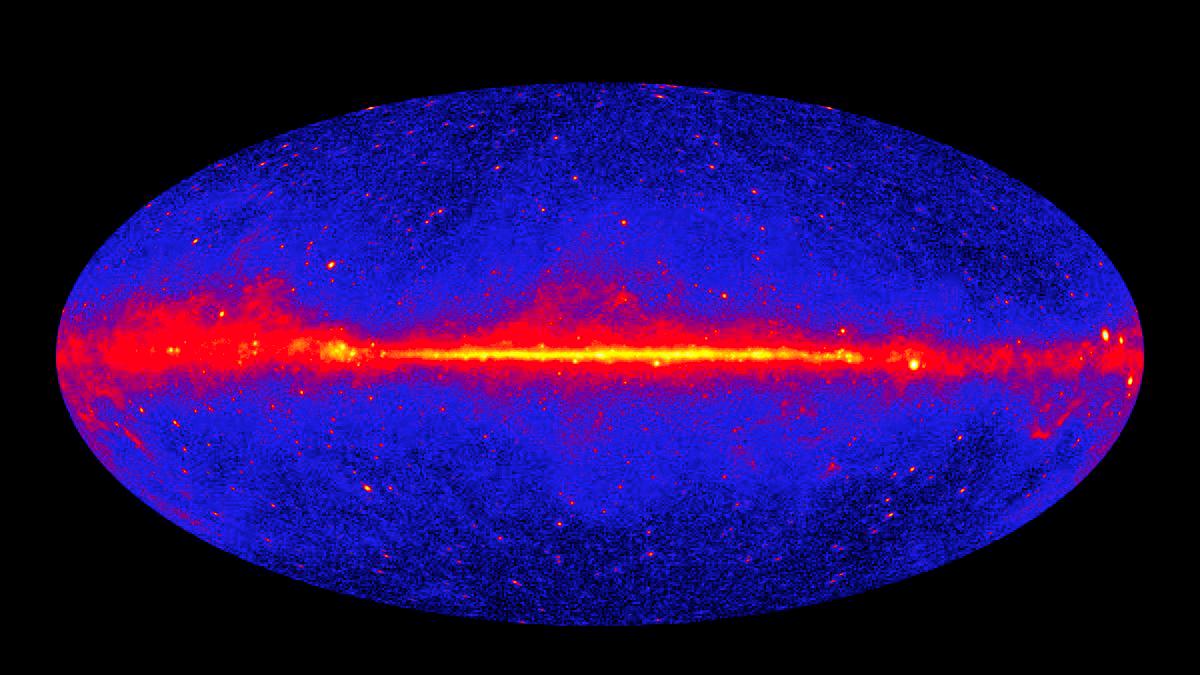WASHINGTON: Scientists are moving closer to confirming the existence of dark matter through studying a diffuse gamma-ray glow near our galaxy’s centre.
Dark matter represents the invisible substance believed to constitute more than one quarter of the entire universe.
Everything visible from stars to planets consists of ordinary matter comprising merely 5% of the cosmos.
This mysterious dark matter does not absorb, reflect, or emit any light, making direct detection extremely challenging.
Scientists base their confidence in dark matter’s existence on its gravitational effects observed across the universe.
Research into gamma-ray excess mapped by the Fermi Gamma-ray Space Telescope offers promising evidence for long-sought confirmation.
Scientists have proposed two competing explanations for these gamma-ray emissions observed near the Milky Way’s heart.
One hypothesis suggests colliding dark matter particles in this galactic region produce the gamma rays.
The alternative explanation attributes the emissions to millisecond pulsars, rapidly spinning neutron stars.
A comprehensive new analysis including advanced simulations found both hypotheses equally likely.
Gamma rays from dark matter particle collisions would match the signal observed by the Fermi satellite.
Understanding dark matter’s nature remains one of physics’ greatest challenges according to study authors.
Our key result shows dark matter fits the gamma-ray data at least as well as the neutron star hypothesis.
Researchers have increased the odds that dark matter has been indirectly detected through this analysis.
The Cherenkov Telescope Array Observatory under construction in Chile may provide definitive answers.
This powerful ground-based gamma-ray telescope could differentiate emissions from the two potential sources.
The facility might become operational as early as 2026 according to researchers.
Dark matter detection has proven difficult because it only interacts gravitationally with visible matter.
No experiment has yet directly detected dark matter particles despite decades of searching.
The gamma-ray excess spans the innermost 7,000 light-years of our galaxy approximately 26,000 light-years from Earth.
Gamma rays possess the smallest wavelengths and highest energy in the electromagnetic spectrum.
Dark matter particles may annihilate completely upon collision, generating gamma rays as byproducts.
The Milky Way likely formed from gravitational collapse of a vast dark matter and ordinary matter cloud.
Ordinary matter cooled and fell into central regions, dragging along some dark matter during formation.
Dark matter particles are thought to be their own antiparticles and annihilate completely when they collide.
Alternatively, the gamma-ray glow could come from thousands of previously unobserved millisecond pulsars.
The Fermi satellite confirmed such pulsars are gamma-ray sources that could explain the regional glow. – Reuters









